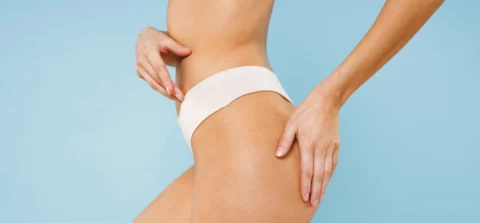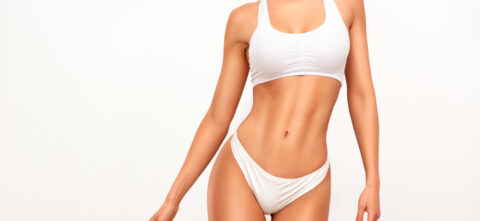Traditional liposuction is no longer the way to get rid of fat deposits in your body, as alternative treatments like CoolSculpting have rapidly gained popularity. A simple treatment plan with this non-invasive body contouring procedure can efficiently remove most of your fat layer thickness, especially if it’s a fat deposit that doesn’t respond to efforts through diet or exercise habits. While it can’t remove the vast amounts of fat that traditional liposuction can, its appeal lies in its capability for non-surgical fat removal.
So what happens if someone with a skin condition like eczema tries CoolSculpting? Science isn’t quite sure, since any patient with a common skin disorder or a form of eczema isn’t allowed to go through CoolSculpting treatments. This doesn’t lock out eczema patients from using CoolSculpting or any similar non-invasive treatment – it just requires them to not have an active breakout at the site when they get their procedure done.
Why You Can’t Get CoolSculpting With Eczema
Eczema – or atopic dermatitis – is a common medical condition that usually manifests in itchy, dry, or inflamed skin. It’s not a condition that’s present all the time, as most eczema patients usually experience an active “breakout” of eczema, which can quickly subside with the right treatment. It’s a common skin disorder that can be triggered by a variety of factors and can usually be resolved with prompt treatment.
To understand why CoolSculpting can’t be used on eczema patients, you need to know how this particular fat reduction procedure works. CoolSculpting uses intense cold (otherwise known as cryolipolysis) to cause your fat cells to break from the inside. These fat cells are then removed through the body’s normal waste removal processes, leaving that area of your skin free from fat cells.
To get this effect, an applicator is put on your fat bulges and cold energy is applied to any pockets of fat beneath the surface of the skin. The fat freezing effect may require several cryolipolysis treatments before it starts to show visible results – but when it does, any stubborn pockets of fat will be removed by the body without the need for cosmetic surgery.
This leads to the two problems with eczema patients getting CoolSculpting treatment:
Potential Interaction With Expected Side Effects
While CoolSculpting does fall under non-invasive fat reduction treatments, this doesn’t mean that patients still can’t experience side effects from the procedure, no matter how minor. One of the common side effects that you might get after CoolSculpting treatment is freezer burn, which can irritate the skin and make any outbreaks of eczema much worse.
Given that the only point of contact your CoolSculpting treatment will have is on the surface of your skin, most providers would not allow anyone with common skin conditions to get CoolSculpting treatments without the results of an annual skin exam or another similar diagnostic test. The CoolSculpting procedure works best on healthy skin since that drastically reduces the complications that you might experience after your procedure.
Sanitation And Hygiene
In contrast to what most people think, eczema isn’t actually a skin condition that can be passed from person to person through infected clothing or equipment. The most that science has to say about what causes eczema is an autoimmune disease or other chronic skin conditions that can make an outbreak more likely to happen.
However, cosmetic providers and other practices are required by law to keep a sanitary environment for their customers – which can make them more careful with accepting patients with eczema for treatments. Even if the condition isn’t contagious, they’ll likely have to do additional work to maintain and clean their equipment after your treatment, especially if it’s a larger practice that accepts more patients.
Overall, most practices aren’t willing to take eczema patients since the potential risks of the CoolSculpting treatment can possibly trigger side effects. It’s important to note that most cosmetic dermatology services will have this rule in place – not just to protect you from any adverse reactions but also to comply with the official regulations regarding CoolSculpting use.
Can Eczema Patients Ever Get CoolSculpting Treatments?
Fortunately, having eczema doesn’t mean that you can’t get CoolSculpting treatments anymore. Most cosmetic practices will allow patients with eczema to receive CoolSculpting treatments if they’ve been cleared by a medical professional or they’re not experiencing an active outbreak in the area to be treated.
However, keep in mind that some practices may shift your CoolSculpting treatments slightly to accommodate for you having eczema. This is because CoolSculpting may sometimes require up to three sessions before the fat freezing process works on all the fat cells under your skin – and this needs to be scheduled exactly on time to prevent any interruptions in the process.
If you’re prone to experiencing outbreaks of eczema, you may have to get the approval of your medical provider that you can tolerate the effects of CoolSculpting treatment, and may possibly have to sign a waiver that exempts the practice from liability if your eczema flares up soon after a CoolSculpting appointment. Fortunately, CoolSculpting does offer semi-permanent to permanent fat reduction, so you don’t have to come in for more than a few treatments.
What Are My Other Options For Fat Removal Or Fat Reduction?

If you think that the risks that you might face with CoolSculpting aren’t worth the effort, there are other non-invasive body contouring techniques that you can look into for removing fat. Keep in mind that the availability of these cosmetic services will depend heavily on the provider that you find – so make sure that you have plenty of options with the practice that you’re going to!
Laser Lipolysis
Laser lipo can be considered as the polar opposite of CoolSculpting treatments: instead of freezing fat, it uses heat to burn them off. The process for going through laser lipo is also similar to the one required for CoolSculpting treatments, with a few extra considerations to keep in mind because of how different the procedure works.
One of the reasons why you may not want to opt for laser lipolysis is that the heat from the procedure can be too much for some people, especially for patients with sensitive skin. Most medical professionals advise those with low pain tolerance to try another method instead of laser lipolysis, since the high heat may trigger adverse reactions in some patients.
Ultrasonic Therapy
Ultrasound fat removal is a more direct method of removing fat without surgery, though the process does involve the insertion of a cannula underneath your skin. It uses ultrasound energy to liquefy the fat under your skin, making it easier for your provider to siphon it off with a cannula. The treatment usually offers a greater fat reduction, and more immediate results compared to other treatments.
Ultrasonic treatment isn’t as aggressive or traumatic as liposuction because cannulas don’t damage the skin layer as much as needles or large incisions. A skilled provider can easily maneuver the cannula underneath your skin to get all the fat without harming the surrounding muscle and tissues. Like other non-invasive treatments, the downtime from this type of procedure is minimal.
Radiofrequency Energy
Radiofrequency energy works similarly to laser lipo and ultrasonic therapy by working directly on the fat cells instead of going through your skin. By using electrical currents and thermal heat energy, radiofrequency therapy shrinks your fat cells and tightens the skin in your treated area. It also boosts collagen production, and can even help manage skin conditions like skin laxity and wrinkles.
However, the biggest benefit for getting radiofrequency energy (especially for eczema patients) is that the tool used during the treatment doesn’t make physical contact with the patient at all. This means that even patients who have an active skin condition can benefit from the treatment without having to go through topical medication or waiting for their outbreaks to die down.
Improve Your Skin With Non-Invasive Cosmetic Treatments With Ethos Spa NJ
For people with eczema, contact dermatitis, or other similar skin conditions, getting CoolSculpting treatment might not be the best choice if you’re experiencing an active outbreak in your treated area. While a single treatment of CoolSculpting is unlikely to give you any serious side effects, your increased skin sensitivity and overall condition of your skin might make the procedure less effective. Treatments can always resume after your skin has finished healing – though the final call should still be left to your cosmetic provider.
If you’re looking for a non-invasive procedure to help you get close to your beauty goals, visit Ethos Spa today! We have extensive experience in using treatments that can help you get back to your daily activities with minimal downtime. To learn more about which non-surgical alternative works best with your desired goals, get in touch with us today.






